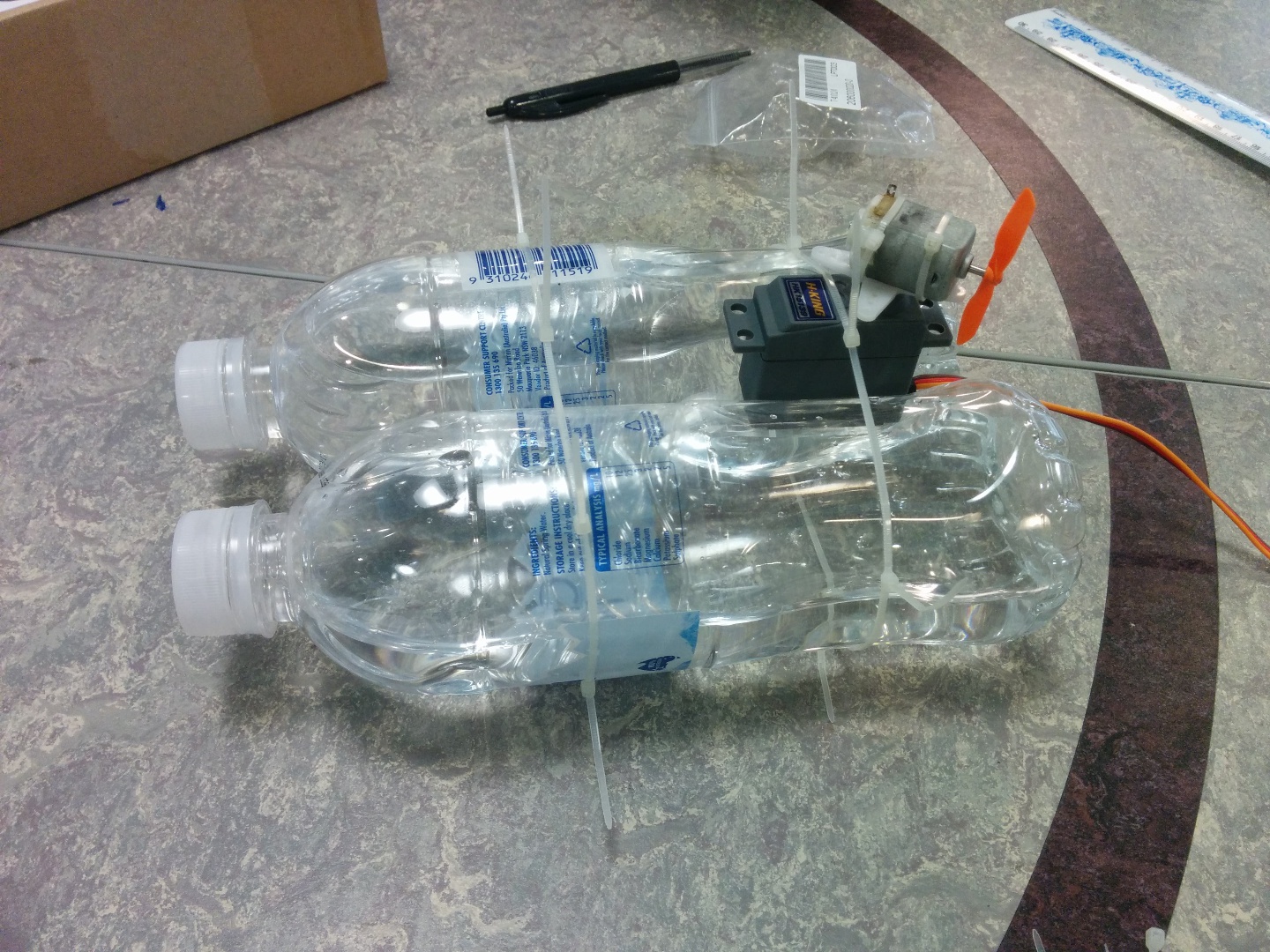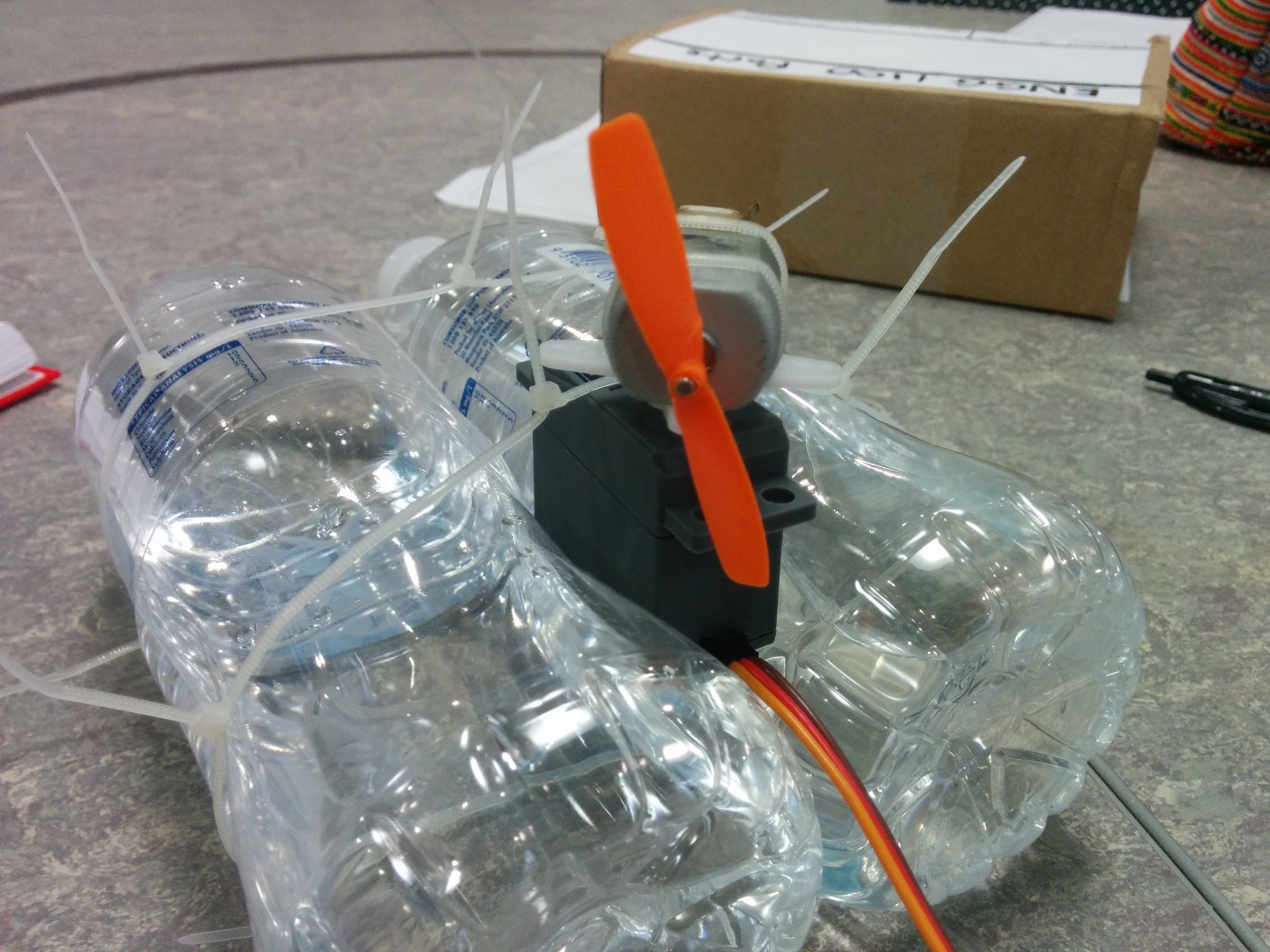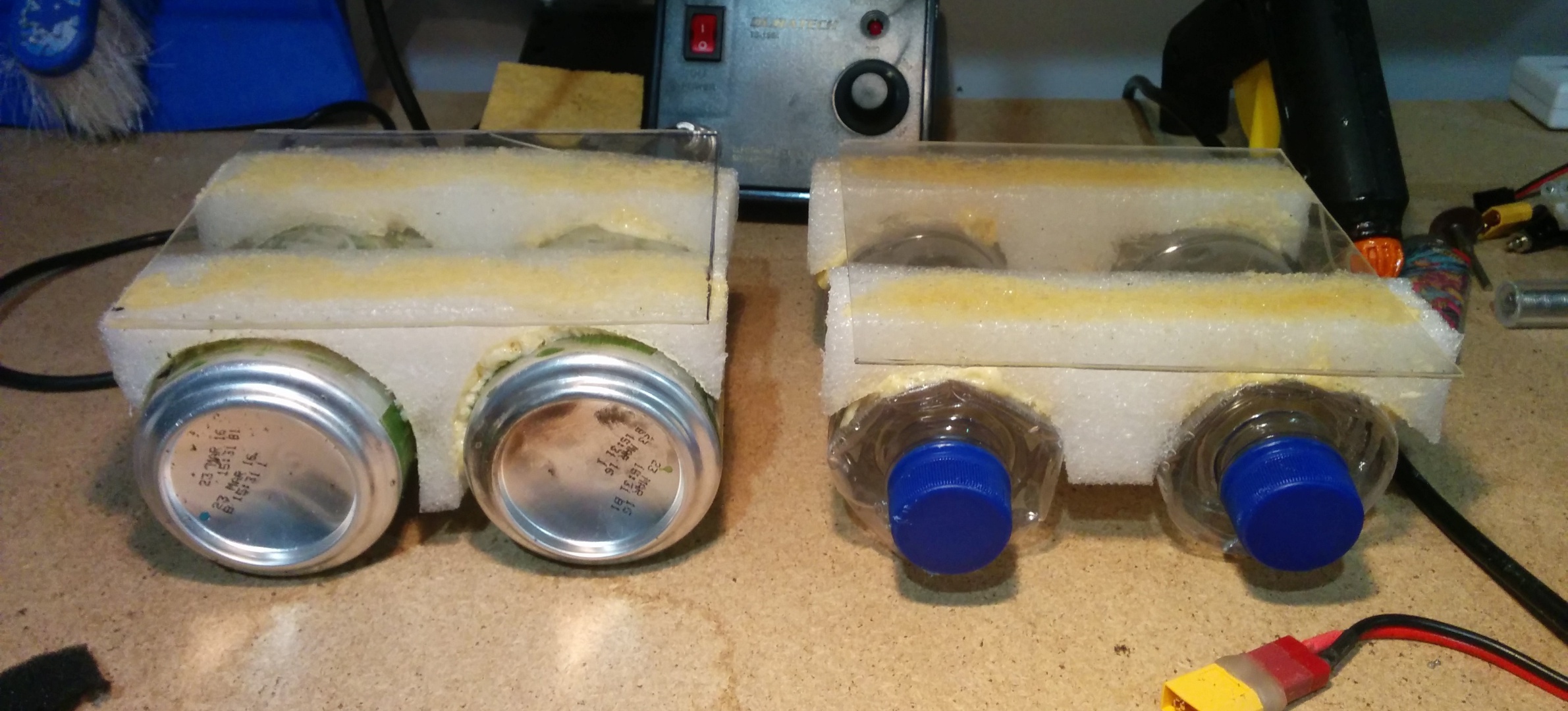Model Black Box Retrieval Craft
This was my first university course project. I mainly developed my skills in:
- coordinating and leading a group project;
- producing a working prototype to a deadline;
- engineering report writing style.
Hardware Design
The requirements of the hypothetical tender proposed by the course was:
- have a sustainable design;
- be constructed using basic hand tools;
- fit inside 200×200×200mm box (150×150×150mm for bonus);
- comply with $100 budget ($75 for bonus);
- completely autonomous;
- power for 2×5 minute deployments;
- weigh less than 0.5kg for bonus.
The team set out to achieve all of these goals including the bonus specifications.
Mockup of the main full design is shown below.



Two candidate hull designs, using reused materials, were contructed as shown below.

The water bottle hull had the buoyancy best suited to the mass of the electronics. And so it was chosen.
Below is the product with all electronics mounted. A geared motor with spool was attached to act as the winch.

Software Design
The software was originally intended to use a magnetometer to detect the signature of the black box. However, because the magnet inside the black box was not large enough to be detected from the surface of the water, a random search pattern was used. This is a very simple, drive until it hits a wall, turn, and then drive forward again. The video below shows a demo of this. There are multiple ‘timeouts’ demonstrated which are set to just before the marking criteria times.
This, and a combination of sheer luck, meant we achieved full marks for the demo. Video shown below